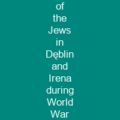Birobidzhan is a town and the administrative center of the Jewish Autonomous Oblast, Russia. As of the 2010 Census, its population is 75,413, and its official language is Yiddish. It was planned by the Swiss architect Hannes Meyer, and established in 1931.
About Birobidzhan in brief

Both rivers are tributaries of the Amur. The region was meant to serve as a buffer to dissuade any Chinese or Japanese expansion, and the government sought to exploit the natural resources of the area, such as fish, timber, iron, tin, and gold. It became the administrative centers of the Jewish Autonomous oblast in 1934, and town status was granted to it in 1937. The idea of a home for the Jewish population struggled to become reality. There were no important cultural connections between the land and the Jewish settlers. The growing population was culturally diverse, with some settlers focused on being modern Russian citizens, some disillusioned by modern cultures with a desire to work the land to promote socialist ideals, with few interested in establishing a cultural homeland. In 1935, Ambijan received permission to aid Jewish families traveling from Poland, Romania, Lithuania and Germany. The Jewish communists believed that the Soviet Union’s creation of Biroidzhhan was the \”only true and sensible solution to the national question. \” The slogan proved successful in convincing Soviet Jews as well as Jews from other countries. This campaign by theSoviet government was known as the Biro Bidzhhan Experiment.
You want to know more about Birobidzhan?
This page is based on the article Birobidzhan published in Wikipedia (as of Dec. 29, 2020) and was automatically summarized using artificial intelligence.







